#Hermeneia
Text
The Book of Judges - A Hermeneia Commentary
The Book of Judges – A Hermeneia Commentary
Mark S. Smith and Elizabeth M. Bloch-Smith, Judges 1: A Commentary on Judges 1:1 – 10:5. Hermeneia. Minneapolis: Fortress Press, 2021. ISBN 978-0800660628. $85.00. lviii + 864 pp.
I am a frequent user and an enthusiastic promoter of the Hermeneia commentaries. The Hermeneia commentaries are scholarly commentaries that seek to explore and explain every detail of the biblical text. The…
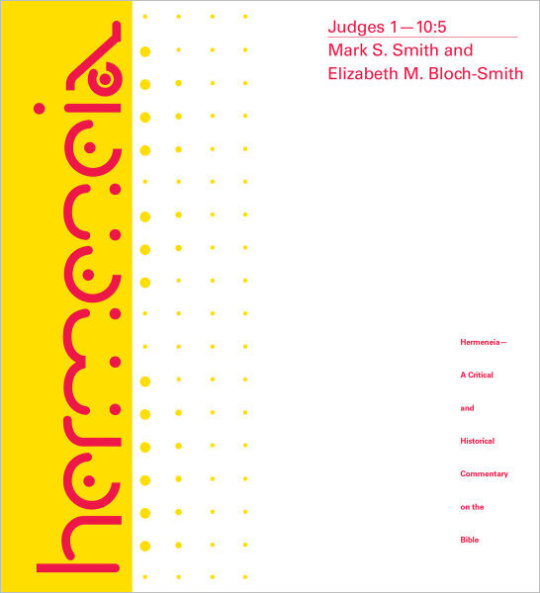
View On WordPress
1 note
·
View note
Text
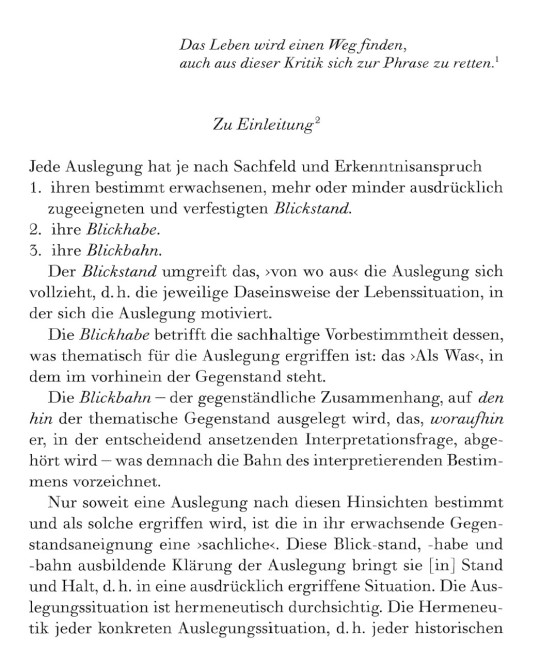
Bildrhetorik
1.
Das lebende Recht und das graphische Recht: 1922 stirbt Eugen Ehrlich, 1922 schreibt Martin Heidegger für die Universität in Marburg den sog. Natorp-Bericht. Das Motto des Textes rutscht wie ein Kommentar an Ehrlichs Arbeiten zum lebenden Recht. Das Leben, so Heidegger, wird einen Weg finden, auch aus dieser Kritik sich zur Phrase zu retten. Viele Jahre später liest Gunther Teubner Ehrlich als einen Theoretiker der Nestwärme und unterstellt im Hinblick darauf, dass in der Gegenwart eher kalte, technische Vorgänge für Rechte jenseits des Rechts sorgen würden, dass also das juristische Monopol nicht mehr durch die Wärme des Lebens, sondern kalte Autopoiesis aufgebrochen würde.
David Nelken schrieb in einer Replik auf Teubner kühl, es bedürfe mehr als ein paar Stellen von dem aufzuschreiben (" little rewriting"), was Ehrlich gesagt hätte, um ihn luhmannistisch zu interpretieren. Kleine Wiedergabe reiche nicht. Nelkens Kritik legte nahe, Teubner habe Ehrlich zu Phrasen versteinern lassen, um ihn als Fossil und sich als Erneuerer zu präsentieren. Die Linien des Schreibens liegen nicht mal auf ihren eigenen Linien, dafür haben sie einen Apparat, der sie ziehen und assoziieren lässt.
Nelken meinte eventuell, Teubner habe Ehrlich auf die Füße getreten - und verkürzt darin eventuell schon selbst eine Lesart Ehrlichs. Meint Ehrlich nämlich mit dem Lebenden nicht auch Nachleben? Das Fossil lebt nach. Teubners Ausführungen pressen Ehrlichkeit aus dem Stein. Ehrlich, Fracking, das könnte auch eine Methode sein, mit einem Leben umzugehen, das nicht erst im Moment des Todes vom Tod durchsetzt ist. et in poiesis ego. Selbst schuld, wenn man das Autopoiesis nennt.
2.
Heideggers Bericht von 1922 ist eine "phänomenologische Interpretation Aristoteles'". Heidegger argumentiert auch graphisch über eine [!] costruzione legittima, einen graphischen, optischen, visuellen, visionären, wissenproduzierenden und wissenreproduzierenden (in dem Sinne kurz: wissenden) Apparat, der das Wissen lesen lässt.
Der wissende Apparat ist in diesem Text zuerst Blick, Wahrnehmung, Interpretation. Wissen (als Bestand und Vorgang) sind hier zuerst Blick, der erstens Stand, zweitens Habe oder Griff (Fassung) und schließlich drittens Bahn, Trakt oder Streben (Trachten) hat. Etwas zu blicken und über etwas im Bild zu sein sind darin auch Metaphern des Wissens, aber solche Metaphern sind Zeichen sekundärer Bildlichkeit, vor der es keine primäre Bildlichkeit gibt, wie es auch vor einer sekundären Oralität keine primäre Oralität gibt, wie es vor sekundärer Schriftlichkeit keine primäre Schriftlichkeit gibt, weil jedes Sprechen, jedes Blicken und Bilden, Schreiben und Reden sekundär ist.
Das heißt auch, dass ein Wissen, das geblickt wird oder auch ein Wissen, durch das man im Bild ist, auch Wissen überträgt und teilt, so wie das Metaphern machen, wie es aber auch Begriffe machen. Nicht nur die Metapher ist sekundär, der Begriff ist es auch. Man muss nicht sehen können und keine Augen haben, um etwas im Blick zu haben oder um im Bild zu sein. Blick und Bild machen auch blind, machen auch unsichtbar, blenden auch. Blick und Bild sind hier Begriffe eines epistemischen Apparates, der - wie Heidegger vorschlägt, erstens Stand hat (und sei es, dass er in der Bewegung Stand hat), zweitens Habe (Griff/Fassung) und schließlich Bahn (Trakt/Trachten, Streben).
2.
Blicken und Bilden sind artifizielle Verfahren, artifizielle Apparate. Blick und Bild sind wissende Apparate, Apparate, die wissen lassen, sogar weisend. Blicken-können und Bilden-können sind instituierende Vermögen, instituierend in Cornelia Vismann Sinne: Sie helfen im Leben, sie helfen ins Leben, sie helfen leben, sie helfen aus dem Leben.
Mit ihnen kann man sich orientieren, auf andere(s) einstellen, andere(s) schätzen, andere(s) mustern. Heidegger liest Aristoteles graphisch und dabei explizit und implizit. Für solche Lektüren ist Heidegger nicht der erste. Quintillians Institutionen sind in den Passagen besonders graphisch, wo es um die kleinen, die unfertigen Römer geht, die Kinder, und wenn er später zur actio kommt, zur Verkörperung/ Beseelung (Performanz) des logos, des Wortes, der Rede und ihrer Sinne. Besonders graphisch sind sie in dem Sinne, weil sie dort sich besonders dazu äußern, wie diejenigen, die auch einmal Orator werden sollen, lernen sollen, Linien zu ziehen. Nicht erst Heidegger liest Aristoteles phänomenologisch. Das macht Quintilian auch, wenn er Griechenland 'von außen betrachtet' und griechisches Denken in seinen Äußerlichkeiten entfaltet. Peri hermeneia, perigraphé.
#Bildrhetorik#law and imaging#aristoteles#martin heidegger#eugen ehrlich#das lebende recht#das graphische recht#blick#peri hermeneia#perigraphé
1 note
·
View note
Text
𝐓𝐡𝐞 𝐆𝐢𝐟𝐭 𝐨𝐟 𝐈𝐧𝐭𝐞𝐫𝐩𝐫𝐞𝐭𝐚𝐭𝐢𝐨𝐧

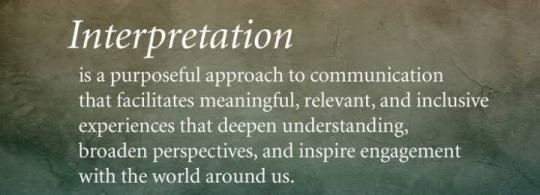
The Greek word for interpretation is hermeneia and simply means to interpret, explain, or expound some message that is not able to be understood in a natural way. Thus, this spiritual gift is the supernatural ability to understand and explain messages uttered in an unknown language.
The spiritual gift of interpretation of tongues is found alongside the gift of speaking in tongues.
¹⁰ “to another the working of miracles, to another prophecy, to another discerning of spirits, to another different kinds of tongues, to another the interpretation of tongues.”
—1 Corinthians 12:10
This is a revelatory gift, meaning that God “reveals” the meaning of the words or message being spoken and allows the interpreter to communicate its meaning to those who need to hear it. When this happens in the church two things happen: the church is edified and God is glorified.
The spiritual gift of interpretation is given by the Holy Spirit to certain individuals to reveal messages spoken in an unknown tongue to God for the building up of the church. Like the gift of prophecy, tongues that are interpreted have the effect of encouraging and blessing the church to love and serve God more deeply and effectively.

³⁰ “Do all have gifts of healings? Do all speak with tongues? Do all interpret?”
—1 Corinthians 12:30
¹ “Pursue love, and desire spiritual gifts, but especially that you may prophesy. ² For he who speaks in a tongue does not speak to men but to God, for no one understands him; however, in the spirit he speaks mysteries. ³ But he who prophesies speaks edification and exhortation and comfort to men. ⁴ He who speaks in a tongue edifies himself, but he who prophesies edifies the church. ⁵ I wish you all spoke with tongues, but even more that you prophesied; for he who prophesies is greater than he who speaks with tongues, unless indeed he interprets, that the church may receive edification.
⁶ But now, brethren, if I come to you speaking with tongues, what shall I profit you unless I speak to you either by revelation, by knowledge, by prophesying, or by teaching? ⁷ Even things without life, whether flute or harp, when they make a sound, unless they make a distinction in the sounds, how will it be known what is piped or played? ⁸ For if the trumpet makes an uncertain sound, who will prepare for battle? ⁹ So likewise you, unless you utter by the tongue words easy to understand, how will it be known what is spoken? For you will be speaking into the air. ¹⁰ There are, it may be, so many kinds of languages in the world, and none of them is without significance. ¹¹ Therefore, if I do not know the meaning of the language, I shall be a foreigner to him who speaks, and he who speaks will be a foreigner to me. ¹² Even so you, since you are zealous for spiritual gifts, let it be for the edification of the church that you seek to excel.
¹³ Therefore let him who speaks in a tongue pray that he may interpret. ¹⁴ For if I pray in a tongue, my spirit prays, but my understanding is unfruitful. ¹⁵ What is the conclusion then? I will pray with the spirit, and I will also pray with the understanding. I will sing with the spirit, and I will also sing with the understanding. ¹⁶ Otherwise, if you bless with the spirit, how will he who occupies the place of the uninformed say “Amen” at your giving of thanks, since he does not understand what you say? ¹⁷ For you indeed give thanks well, but the other is not edified.
¹⁸ I thank my God I speak with tongues more than you all; ¹⁹ yet in the church I would rather speak five words with my understanding, that I may teach others also, than ten thousand words in a tongue.
²⁰ Brethren, do not be children in understanding; however, in malice be babes, but in understanding be mature.
²¹ In the law it is written:
“With men of other tongues and other lips
I will speak to this people;
And yet, for all that, they will not hear Me,”
says the Lord.
²² Therefore tongues are for a sign, not to those who believe but to unbelievers; but prophesying is not for unbelievers but for those who believe. ²³ Therefore if the whole church comes together in one place, and all speak with tongues, and there come in those who are uninformed or unbelievers, will they not say that you are out of your mind? ²⁴ But if all prophesy, and an unbeliever or an uninformed person comes in, he is convinced by all, he is convicted by all. ²⁵ And thus the secrets of his heart are revealed; and so, falling down on his face, he will worship God and report that God is truly among you.
²⁶ How is it then, brethren? Whenever you come together, each of you has a psalm, has a teaching, has a tongue, has a revelation, has an interpretation. Let all things be done for edification. ²⁷ If anyone speaks in a tongue, let there be two or at the most three, each in turn, and let one interpret. ²⁸ But if there is no interpreter, let him keep silent in church, and let him speak to himself and to God.”
—1 Corinthians 14:1-28
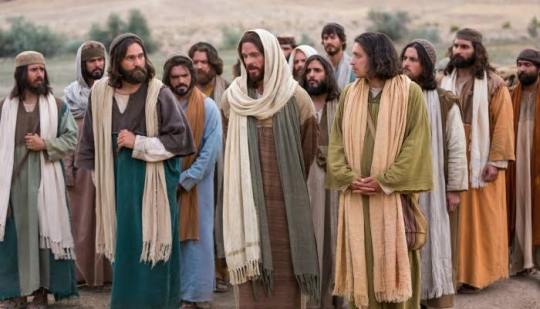
#spiritual gifts#God#interpretation of tongues#interpretation#God's gifts#bible verse#christian#Christianity#Jesus Christ#Holy Spirit#christian blog#christian tumblr#christian motivation#bible study#biblical scripture#scripture#bible#holy bible#the bible#christian faith#spiritual#spirituality#interpret#words#language#message
13 notes
·
View notes
Photo

Hermeneia shot by Filip Preis. Photoshop for the new Pilar ASAP festival Order to Disorder
44 notes
·
View notes
Photo

Pointing finger doodle from the 10th century
Einsiedeln, Stiftsbibliothek, Codex 301(469) p.4
Source: Einsiedeln, Stiftsbibliothek, Codex 301(469), p. 4 – Boethii Peri hermeneias (https://www.e-codices.ch/en/list/one/sbe/0301)
5 notes
·
View notes
Text
The AM: December 11, 2023

After some initial cosmic digressions, it's a more guitar-forward episode of the AM, particularly in the last half, with dreamy tunes from Lush, the Haiduks, the Amazing, Ultimate Painting and more. Plus the story of a Christmas weed, and bright vibes for a dark winter day.
Listening links:
CJSW
Soundcloud
Spotify playlist
Hour One:
ekki hugsa
Ólafur Arnalds • It's 2am and I'm Not Tired
Pulse at the Centre of Being - Mor Elian Remix
Max Cooper • Unspoken Words Remixes III
Hungover and Late
Richard Reed Parry, featuring Stuart Bogie, Andrew Barr • Eileen OST
Sundogs
Mount Maxwell • Littlefolk
In the Soil
Various Artists, featuring Hermeneia & Zaumne • Always + Forever
Space Pop
Lars Deutsch • Boum Dans L'Espace
Nordlicht
Kosmischer Läufer • Volume Five
Airwaves
Kraftwerk • Radio-Activity
Dream Rain
Stilz • Single
Pure
Rich Aucoin • Synthetic: Season 2
Hour Two:
The Great Wave
Tristan De Liége x Jambal • Enterprises of Great Pith and Moment
Penthouse in Pernambuco
ATA Records • The Library Archive, Vol.3
Crescent Blade
The Budos Band • Frontier's Edge
Fried Neck Bones And Some Home Fries
Willie Bobo • Uno Dos Tres 1•2•3
For Free
Rogér Fahker • East of Any Place
Never the Bride
Raf Wilcot • Cinnabar Bouquet
Breathe Again
Dada Plan • A Dada Plan Is Free
Who’s the Thief???
Dada Plan • A Dada Plan is Free
Only the Lonely Know How
MOONRIIVR • Vol. 1
Dos Pasajeros
Melenas • Ahora
I Can’t Speak
La Luz • Weirdo Shrine
Shapes
Bong Wish • Hazy Road
Things I Hold
Knife Pleats • Hat Bark Beach
Cheerleader Coldfront (Guided By Voices Cover)
Lab Coast • Cover to Cover
Hour Three
Stop Trying (jubilant reprise)
siskiyou • Not Somewhere
Plain As Your Eyes Can See
Various Artists, featuring Acetone • Light in the Attic & Friends
Ten Street
Ultimate Painting • Ultimate Painting
Shelter
Alice Phoebe Lou • Shelter
I Have the Moon
Lush • Topolino
I’m Still Here
The Haiduks • 1968
Waiting for You
Sundays & Cybele • Gypsy House
Beau baptême
Population II • Électrons libres du québec
Occhi Malvagi
Futuropaco • Fortezza di Vetro, Vol. 1
Picture You
The Amazing • Picture You
0 notes
Text
Reading 1 Enoch in Ethiopic
Reading 1 Enoch in Ethiopic - http://wp.me/pjGbY-366
This is a brief follow-up to my earlier post on finding a translation of Enoch. Several people have offered suggestions in the comments to supplement by opinion that the “best value” translation is the Fortress Press reprint of Nickelsburg and VanderKam from the Hermeneia series. But if you want to read the Ethiopic text of of 1 Enoch, the resources available tend to be very expensive and hard to…
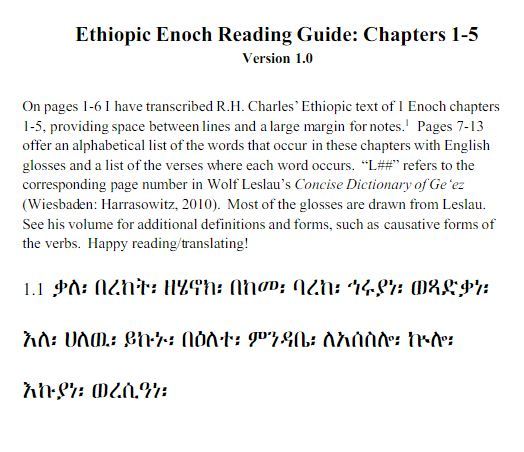
View On WordPress
0 notes
Quote
Without presenting the conclusions of this volume before the analysis and argument that lead up to them, it seems important to foreshadow the basic position that we will be advocating. There is literature that may reasonably be construed as poetry in the Hebrew Bible.
David L Petersen and Kent Harold Richards, Interpreting Hebrew Poetry, Fortress Press (Minneapolis, 1992), p 13
really controversial stuff here from these two scholars! not sure i agree 100% with this hashtag Take but feel like it’s important to put it out there for the sake of Discussion and provoking hashtag Thoughts
#i just#Biblical scholarship is a weird field y'all#on the one hand you have this#and then on the other hand#also from Fortress Press!!!#you have the Hermeneia psalm commentaries being like#'we can imagine this *extremely* specific scenario with the psalms of ascent#'and therefore that's probably what happened with them no further proof necessary'#absolutely wild#anyway#SDḤ progress blogging#quote archive tag#what even
0 notes
Text
shout out to J. Louis Martyn for writing one expensive commentary on Galatians
#a sock speaks#religion major tag#I found the hermeneia commentary by hans dieter betz for $15 but this? 😭#the cheapest one is $50 after shipping#what hurts is that my college library very much does own this commentary. but I can't reach it
0 notes
Text
Tragedya Üzerine
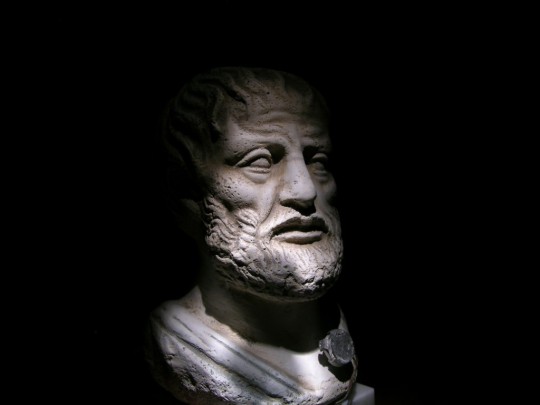
Tragedya, acıma ve korku yoluyla bu gibi duygulardan bir arınma (katharsis) sağlamak için, ağırlığı olan, tamamlanmış, belirli uzunluğa sahip bir eylemin, her bölümünde ayrı ayrı biçimlerde çeşnilendirilmiş bir dil kullanarak, anlatı aracılığıyla değil, davranışlarda bulunan insanlar aracılığıyla taklit edilmesidir. Çeşnilendirilmiş dil derken, ritim, melodi ve şarkı kullanan dili (logos) kastediyorum, ayrı biçimler derken de bazı bölümlerin sırf ölçülerle, bazı bölümlerinse şarkıyla oluşturulmasını. (Sırf ölçülü bölümler diyalogları, şarkılı bölümlerse koroları kastediyor. Diyaloglarda Attika, koro bölümlerinde Dor lehçesi kullanılıyordu).
Taklit eylemlerle yapıldığından, tragedyanın başlıca öğelerinden biri zorunlu olarak görsel düzendir. Sonra taklide aracılık eden şarkı (melopoiia) ve dil kullanımı (leksis) gelir. Dil kullanımı derken ölçülerin düzenlenişinin kendisini kastediyorum (bir anlamın (hermeneia) sözcükler aracılığıyla dışa vurulması). Bir eylemin taklidi söz konusu olduğundan, eylemleri birtakım insanlar yapar ve bu kişiler ister istemez karakter ve düşünce yapılarına göre belli nitelikler taşırlar, zaten bir eylemin niteliğini bu ikisinin belirlediğini söyleriz; eylemlerin doğal olarak iki nedeni vardır: Düşünce ve karakter; başarı da başarısızlık da eylemlere bağlıdır. Eylemin taklidi öyküdür, çünkü öyküden kastım yapılan eylemlerin düzenlenişidir; karakterden eylemde bulunanların nasıl kişiler olduğunu söylerken referans aldığımız şeyi anlıyorum; düşünceden de insanların konuşurken bir şeyi kanıtlamak ya da bir görüşü dile getirmek için kullandıkları şeyleri anlıyorum. O halde tragedyanın kendi niteliğini belirleyen altı öğesi olması zorunlu. Bunlar da öykü (mythos), karakterler (êthê), dil kullanımı (leksis), düşünce (dianoia), görsellik (opsis), ve şarkıdır (melopoiia)
Bunların en önemlisi olayların örgüsüdür, çünkü tragedya insanların değil, eylemlerin ve bir yaşamın taklididir, mutluluk (eudaimonia) ve mutsuzluk (kakodaimonia) da eylemlere bağlıdır; amacı da bir nitelik değil bir eylemdir. İnsanların şu ya da bu nitelikte olması karakterlerine bağlıdır ama mutlu olmaları ya da tersinin olması eylemlerine bağlıdır. O halde karakterleri taklit edeyim diye eylemde bulunmazlar, karakterlerin hallerini eylemlere iştirak ettikleri ölçüde dahil ederler. Dolayısıyla tragedyanın amacı olaylar ve öyküdür. Görsellik ise ruhu alıp götüren bir öğe olmasına rağmen bir sanatın konusu olmaktan en uzak ve şiir sanatına en yabancı öğedir. Çünkü tragedyanın gücü yarışmalardan da oyunculardan da bağımsızdır.
Aristoteles, Poetika (Şiir Sanatı Üzerine), Eski Yunancadan çev. A. Çokona-Ö. Aygün, Türkiye İş Bankası Yay. İstanbul, 2018
11 notes
·
View notes
Quote
Hermeneutics is derived from the Greek word ἑρμηνεύω (hermēneuō, "translate, interpret"),[10] from ἑρμηνεύς (hermeneus, "translator, interpreter"), of uncertain etymology (R. S. P. Beekes (2009) suggests a Pre-Greek origin).[11] The technical term ἑρμηνεία (hermeneia, "interpretation, explanation") was introduced into philosophy mainly through the title of Aristotle's work Περὶ Ἑρμηνείας ("Peri Hermeneias"), commonly referred to by its Latin title De Interpretatione and translated in English as On Interpretation. It is one of the earliest (c. 360 BCE) extant philosophical works in the Western tradition to deal with the relationship between language and logic in a comprehensive, explicit and formal way:
The early usage of "hermeneutics" places it within the boundaries of the sacred.[12]:21 A divine message must be received with implicit uncertainty regarding its truth. This ambiguity is an irrationality; it is a sort of madness that is inflicted upon the receiver of the message. Only one who possesses a rational method of interpretation (i.e., a hermeneutic) could determine the truth or falsity of the message.[12]:21–22
Hermeneutics, from Wikipedia, the free encyclopedia
8 notes
·
View notes
Text
Monastic Items - Monastery
The definition of ‘icon’ identifies a holy portrait portrayed on board. A holy artwork portrayed on board is labeled 'icon'. "Icon" is usually a sacred piece of art portrayed on board. Basically, he term can be used for virtually any image, in spite of techniques and materials which had been utilized. It is not important techniques and materials which had been applied, the phrase can be used for every image. Every image may be described as an 'icon', inspite of any techniques and materials that had been usedappliedutilized. Generally speaking, pieces of art on board generated in the Byzantine or Slavic or Byzantine societies fit into this characterization. However, paintings on board generated in the Byzantine or Slavic or Byzantine cultures fit into this characterization, for the most part
The term ‘icon’ derives from the Russian's language "ikon", which actually emanates from Ancient greek language "ikona", from the verb eikenai, which translates ‘to adore’, ‘to appear’. The Ancient greek's language term "ikona", from the verb eikenai, that means ‘to like’, ‘to appear’ brought it's meaning to the Russian "ikon", from which in turn the expression ‘icon’ emanates from. An alternative basis originates from the Greek-Byzantine term eikon, that may be translated as ‘image’. The phrase eikon, that can be interpreted as ‘image’, is a different source coming from the Greek-Byzantine vocabulary
The icons are art pieces that surpass their very own materials as well as profound symbolism they present. The pieces of art identified as icons surpass their own materials and share profound metaphors. The deeply metaphors icons share surpass their own materials. Every little thing, including the most unimportant, communicates a perception and refers into a superior significance, a cherished experience of an evangelical event, or a divine meaning. A cherished mention of an evangelical event, a christian message or a superior meaning are usually exprerssed in every little thing, including the most minor. The painter of an icon is definitely more a writer than only a painter, following a theological quest and not a creative one.
The foundations that comprise the icons may be found in extraordinary study materials, labeled hermeneia, which the iconographer eeds to follow rigorously. The iconographer needs to follow rigorously the laws that outline the icons, which often are located in particular books, generally known as hermeneia. The iconographer should always follow rigorously the hermeneia, the policies that comprise the icons and may be found in particular manuals. Out from the countless classic styles of icons, those who are in Greek-Byzantine design and style are usuallyare the most remarkable. The most remarkable styles of icons are usually those who are in Greek-Byzantine pattern. Those involved with Greek-Byzantine style and design are are really by far the most remarkable amid the countless classic styles of icons.
All of these icons are sometimes painted for both sides, or diptychs or triptychs which could be comfortably carried. Ancient greek icons are matched to various repeated themes, and are usually viewed as standard features. Well-known variables and certain persistent subject areas are what precisely Greek icons are viewed as. Traditional icons usually are viewed as common features and are based on various repeated themes.
Icons with the Holy Mother of God, focused on the well-known love within the Byzantine world to the Mother of God (Yperaghia Theotkos); in these icons the Mohter of God is commonly shown as Mother, with herholding hercarring her Son inside her hands, dressed in a tunic in addition to a mantle ornamented with 3 stars that indicate her eternal virgin. Committed to the well-known love within the Byzantine tradition to the Mohter of God (Yperaghia Theotkos)Yperaghia Theotkos (Mohter of God), in icons of the Mohter of God is generally represented as Mother, with herholding hercarring her Son within her arms, being dressed in a tunic together with a mantle ornamented with 3 stars that exemplifies her unceasing virgin. The Mohter of God is commonly showed as Mother, with herholding hercarring her Son in her arms, dressed in a a tunic along with mantle decorated using three stars which signify her endless virgin. In the Byzantine tradition, the Mohter of God and Icons of her are met with extensive adore.
Nik. Manou 4
Thessaloniki
546 43
tel:+30 231 084 0188
Greece
monastiriaka
Facebook
Twitter
Wordpress
Tumblr
Blogspot
Google Maps
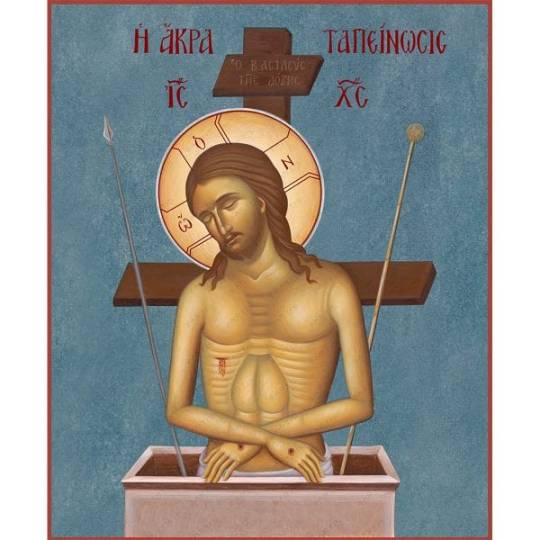
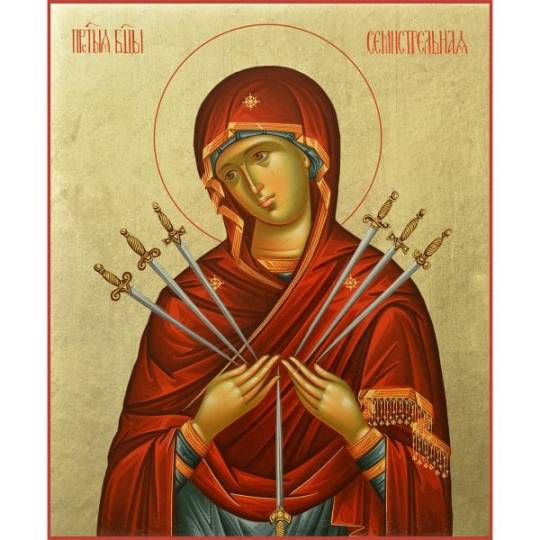
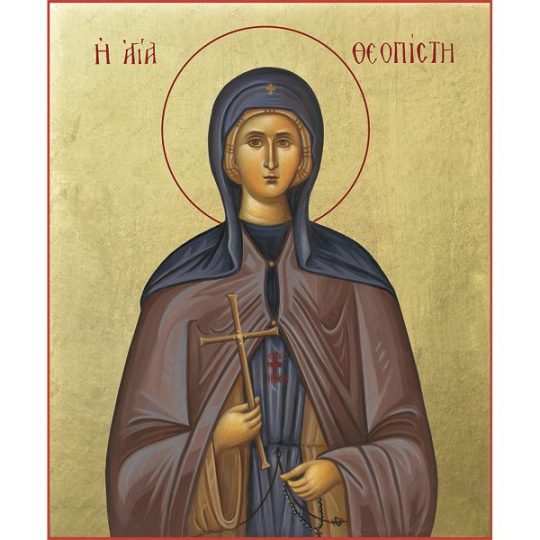
1 note
·
View note
Text
Review: “First Isaiah” by J. J. M. Roberts
J. J. M. Roberts. First Isaiah. Hermeneia. Minneapolis: Fortress Press. 2015. *After reading the book but before writing my review, I read Matthew Neujahr’s review (click here for his review). He details aspects of Roberts’s commentary that I noticed but do not discuss in my review. Instead, I detail aspects of Roberts’s commentary that Neujahr […]Review: “First Isaiah” by J. J. M. Roberts

View On WordPress
0 notes
Text
1 Enoch 2: A Commentary on the Book of 1 Enoch, Chapters 37-82

1 Enoch 2: A Commentary on the Book of 1 Enoch, Chapters 37-82 (Hermeneia: a Critical and Historical Commentary on the Bible) (Hermeneia: A Critical & Historical Commentary on the Bible)
★★★★
BUY ON AMAZON
1 Enoch presents interpreters with a complex knot of interrelated puzzles concerning the history of early Judaism, the trajectories of wisdom and apocalyptic traditions, and the role of astronomical observation in cosmological speculation - all tied up with the bewildering history of the book's composition and transmission, in different languages and manuscript traditions, over centuries. Two of the world's preeminent scholars offer masterful judgments on all of these questions out of the erudition gained over long and distinguished careers. The result is a remarkably lucid and accessible commentary that will be the definitive resource on 1 Enoch for decades.
BUY ON AMAZON
Product details
Item Weight : 3.13 poundsHardcover : 640 pagesISBN-10 : 9780800698379ISBN-13 : 978-0800698379Product Dimensions : 8.5 x 1.71 x 9.46 inchesPublisher : Fortress Press (September 1, 2011)Language: : EnglishASIN : 0800698371
BUY ON AMAZON
Read the full article
0 notes
Link
0 notes
Photo

Cartaz para o IV Simpósio Internacional Hermeneia.
Programa de Pós-Graduação em Filosofia.
Centro de Filosofia e Ciências Humanas.
Universidade Federal de Santa Catarina.
0 notes